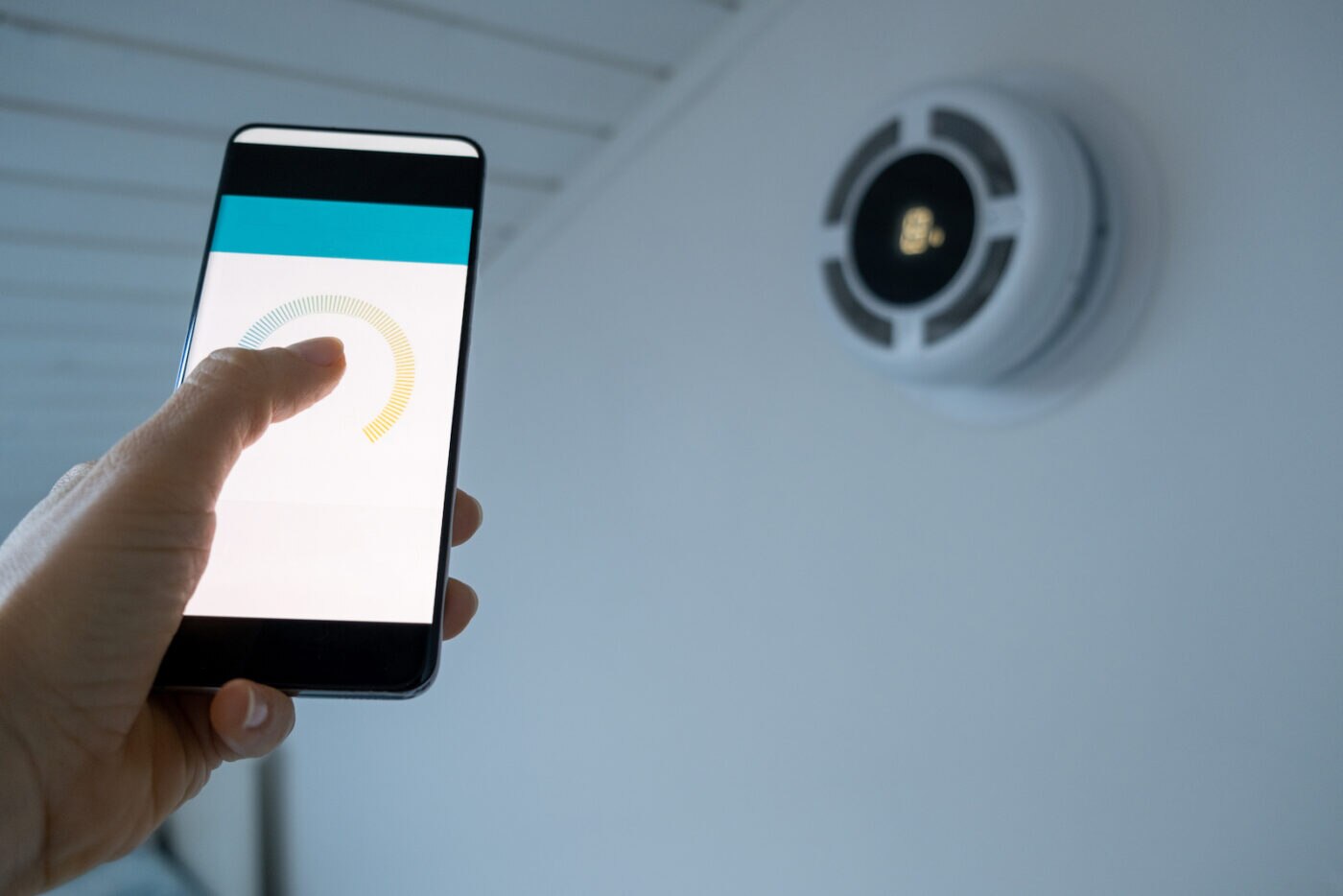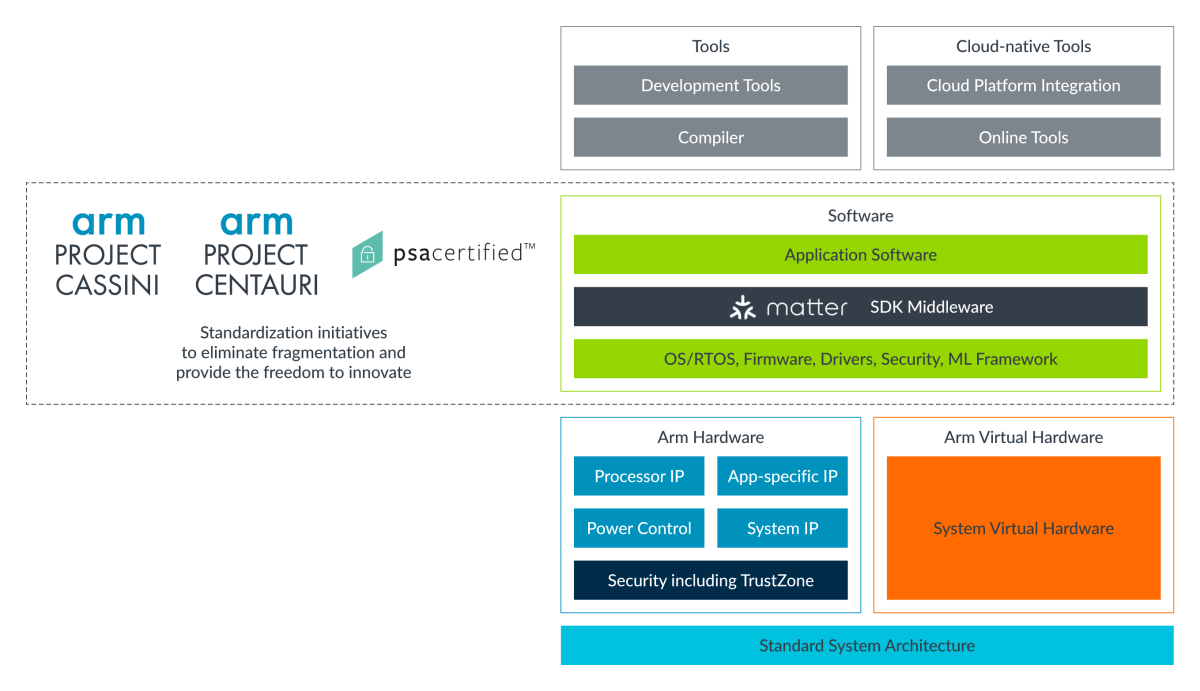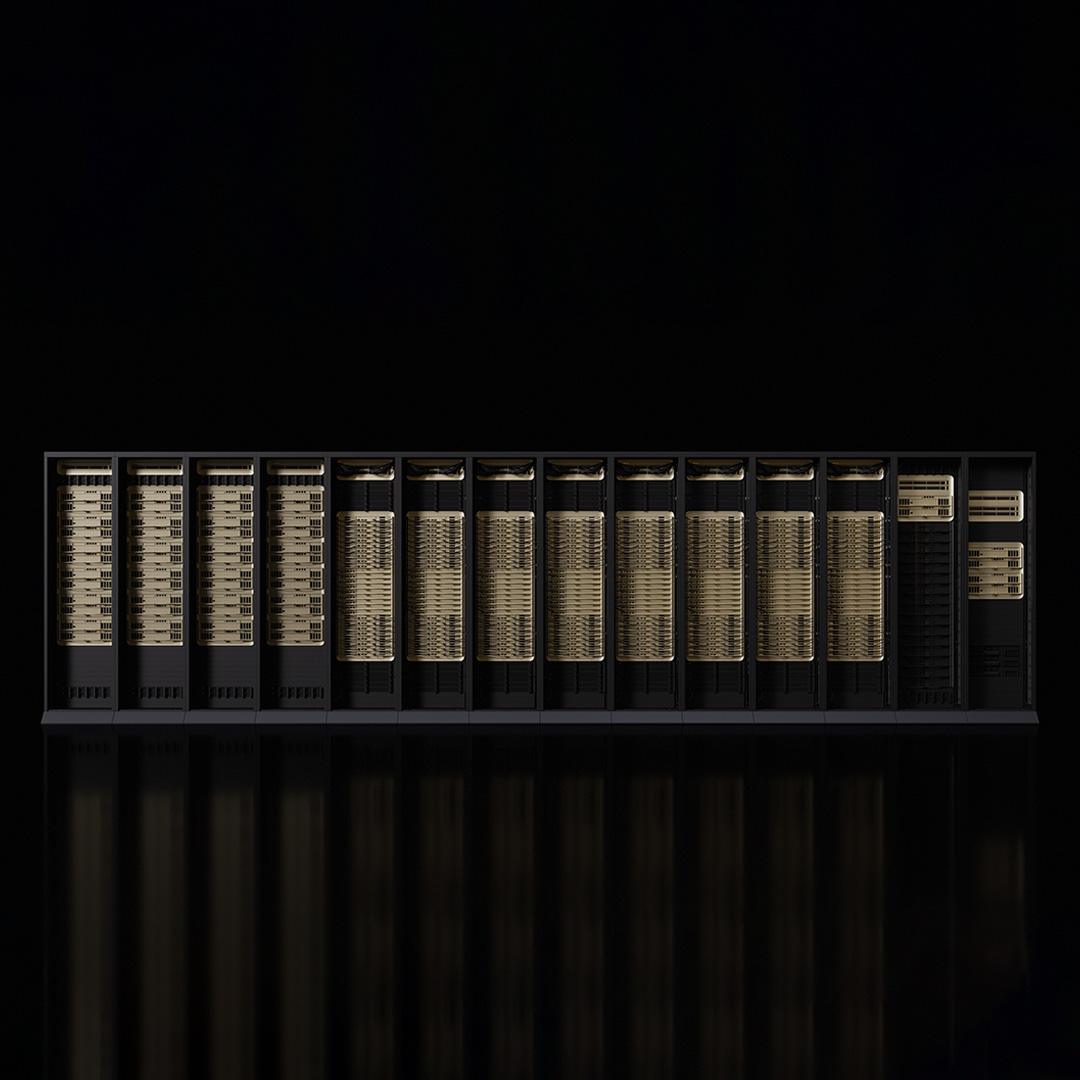Developers Embrace Standards to Accelerate Growth Opportunities for the IoT

By the end of the decade, the potential economic value of the Internet of Things (IoT) is expected to reach $12.6 trillion (yes, that’s a ‘t,’ not a typo), according to a McKinsey study. To achieve the scale required to meet this opportunity, critical IoT standards are coming together to enable the frictionless deployment of secure endpoint-to-cloud solutions – and being embraced by the developer community. In an important milestone on this journey, the Connectivity Standards Alliance (the Alliance) – with which Arm has collaborated for years – just released the Matter 1.0 standard and certification program earlier this month.
How is Arm building the foundation for Matter-compliant IoT devices?
With Matter, the Alliance aims to create a universal IoT standard focused on the application layer, with the goal of simplifying development for manufacturers and increasing compatibility of diverse IoT devices for consumers. The goal is to drive mass deployment in this space.
Our close collaboration should come as no surprise. After all, the IoT runs on Arm, because our ecosystem delivers the IP, tools, software services and security frameworks to best address the wildly diverse nature of IoT applications. As such, Arm is the platform on which Matter-compliant devices will emerge first.
Arm is working closely with the Alliance to ensure the Arm ecosystem is ready to support OEMs and other product developers in building these devices, including a current project with the Matter CI team to explore the integration of Arm Virtual Hardware into the core CI flows of the Matter CI/CD (continuous integration/continuous development) infrastructure. This will ensure product developers can instantly access a scalable virtual test environment that maps directly to the wide ecosystem of Arm-based computing platforms for IoT. Stay tuned for more developments in this area.
How are IoT standards catalyzing the mass deployment of IoT devices?
The Matter project is built on a shared belief that smart home devices – from thermostats to light bulbs to smart TVs – should be secure, reliable, and seamless to use. At Arm, we’ve consistently demonstrated our commitment to standardization in driving the advancement of the IoT through widely adopted initiatives aimed at the foundational hardware, software and security layers of the IoT stack. PSA Certified, Project Cassini and Project Centauri were all designed to address critical challenges developers face across security, edge and IoT endpoint and continue to see strong momentum in the market, enabling faster development at scale for one of the most diverse technology ecosystems.
This diagram represents the big picture and relationship between these different standards and shows how they will all work together to enable new opportunities for players across the IoT value chain:

What opportunities do IoT standards present for the smart home segment?
Given that economic impact figure referenced in the McKinsey study, it’s clear that the smart home represents a huge opportunity for the IoT ecosystem. The Matter standard also extends to many other segments. For example, a connected door lock is the same for a home, a building, or a hotel. A temperature sensor is the same for the home, office, or factory. A smart TV is the same for a home, a building or a hotel. There will be minor installation and management differences to take care of, but the fundamentals of the device remain the same across verticals.
How are developers pivotal in realizing the potential of IoT standards?
The developer experience has been at the core of what we do at Arm for years. The developer community holds the key to the incredible potential of the IoT. That community needs the foundational technologies from Arm and standards such as Matter to continue to enable it with easy access and the most seamless developer experience so that they can focus on the application without worrying about common elements such as security, connectivity, and interfaces. With this combination, developers can build Matter-compliant devices quickly and with ease, capturing their share of the IoT opportunity, built on Arm.
And perhaps by 2030, the $12.6 trillion estimate might end up, in hindsight, being conservative.
Learn how Arm Virtual Hardware helps product developers to scale and accelerate IoT development for home automation.
Any re-use permitted for informational and non-commercial or personal use only.














